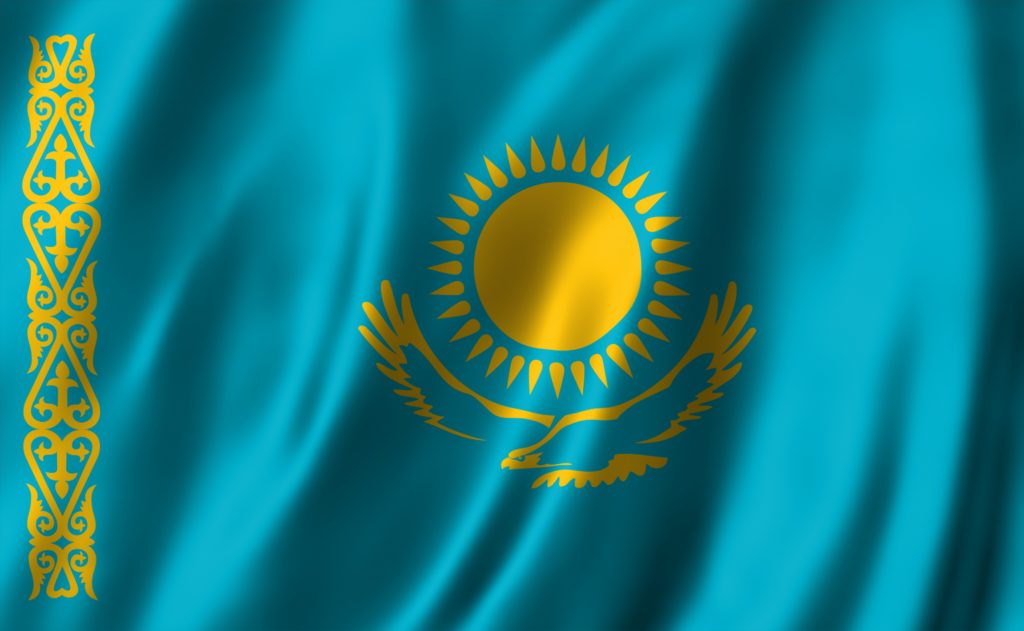The Uranium Trade
After a strong performance in 2021, momentum in the uranium trade has carried over into 2022—largely due to civil unrest in Kazakhstan, which is the world’s largest producer of this commodity.

Nestled between Russia and China in the Far East, the remote nation of Kazakhstan doesn’t usually find itself the subject of headline news—at least not outside the region.
But due to its critical role as one of the world’s largest producers and exporters of uranium, recent events in Kazakhstan have thrust the country into the global spotlight.
Uranium is a key fuel for the nuclear power sector, and Kazakhstan’s production of roughly 43% of the total annual supply makes it an integral cog in this global industry.
It’s for this reason that recent protests and political unrest in Kazakhstan have drawn more attention than one might normally expect from a country of 19 million—a country that most people would probably have trouble placing on a map.
Interestingly, current unrest in Kazakhstan can also be traced back to a type of fuel, but surprisingly it’s not uranium. No, the recent civil unrest in Kazakhstan can instead be tied back to a type of gasoline known as LPG, which recently doubled in price. And it’s that price spike that appears to have catalyzed the uprising.
Due to the high price of regular gasoline, many Kazakh citizens had outfitted their vehicles to run on LPG, because it was less expensive at the pumps. At least that was the case, until recently.
To express their shock and outrage over the sudden spike in LPG prices, thousands of Kazakh citizens took to the streets in early January to protest what was largely viewed as a price-gouging scheme tacitly approved by the government. In a matter of days, the uprising had expanded from fuel-related frustrations, to include a broader anti-government stance.
That second phase of the protests was punctuated by extreme acts of rioting which ultimately saw the Kazakh Presidential Residence set ablaze in the country’s capital of Almaty.
The decision to raise prices on LPG has since been reversed, and while that has eased tensions somewhat, it probably won’t completely extinguish long-simmering frustrations with corruption and nepotism in the country.
It’s the lingering threat of further unrest that has global uranium markets on edge, especially with tensions already high as a result of a Russian military build-up on its shared border with Ukraine.
The price of raw uranium has ranged between roughly $43/pound and $47/pound since the protests were first reported.
Source: Reuters
Importantly, uranium prices had already been in focus due to a strong rally during 2021. Uranium spot prices were up roughly 42% over the course of last year, after starting 2021 trading about $29/pound.
And one of the primary reasons for rising interest in uranium last year was due to increased demand from the cryptocurrency mining sector.
2021’s Crypto-Fueled Uranium Rally
As most are aware, vast amounts of energy are required to fuel cryptocurrency mining operations. And in recent years, as cryptocurrency mining became more and more competitive, digital miners sought to establish their operations in close proximity to cheap and stable energy sources.
In many cases, that resulted in mining operations being linked to energy sources with heavy carbon footprints—like coal, oil or natural gas.
But last year, the cryptocurrency mining sector suffered serious reputational damage as a result of new research which revealed the vast amount of energy necessary to fuel the world’s cryptocurrency mining operations. Some estimates have suggested it’s equivalent to the annual requirements of a large country—such as Argentina or Norway.
In an attempt to sidestep the negativity associated with fossil fuels and climate change, some cryptocurrency miners apparently made the decision to try and utilize a different source of plentiful, stable and relatively cheap energy—nuclear.
At their core, nuclear fission plants are powered by uranium pellets. The heat produced from the reactor core is used to boil water into steam, which in turn powers the blades of a steam turbine. As those turbines rotate, they activate generators that produce electricity.
Considering all of the above, one can see why the uranium sector has been especially hot in recent months. And why the situation in Kazakhstan is of particular interest to uranium investors and traders.
At this time, uranium operations in Kazakhstan appear to be mostly unaffected by the current unrest. For example, the largest uranium producer in the world—Kazatomprom (located in Kazakhstan)—reported on Jan. 6 that it was operating “normally” with no reductions in output or exports.
However, if the situation in Kazakhstan were to devolve further, and potentially ensnare the uranium sector, one could see how uranium prices could be subject to another dramatic price spike.
For this reason, market participants may want to continue to track the situation in Kazakhstan and add uranium producers (and other companies exposed to the sector) to their watchlists, such as the following:
- Cameco Corp (CCJ)
- Denison Mines (DNN)
- Energy Fuels (UUUU)
- Global X Uranium ETF (URA)
- Lightbridge Corporation (LTBR)
- NexGen Energy (NXE)
- North Shore Global Uranium Mining ETF (URNM)
- Sprott Physical Uranium Trust Fund (SRUUF)
- Uranium Energy (UEC)
- Uranium Royalty (UROY)
To follow everything moving the financial markets in 2022, readers can also tune into TASTYTRADE LIVE—weekdays from 7 a.m. to 4 p.m. CST—at their convenience.
Sage Anderson is a pseudonym. He’s an experienced trader of equity derivatives and has managed volatility-based portfolios as a former prop trading firm employee. He’s not an employee of Luckbox, tastytrade or any affiliated companies. Readers can direct questions about this blog or other trading-related subjects, to support@luckboxmagazine.com.



















